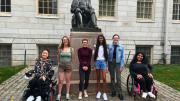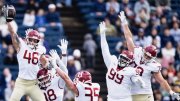The voices of disabled Harvard community members are finding new strength amidst a recent surge in student- and alumni-led accessibility initiatives. Last year, students across the University formed The Harvard Student Alliance for Disability Action, and this year, alumni created the Harvard Alumni Disability Alliance. In May, Harvard held an inaugural affinity celebration for graduates with disabilities, bringing together roughly 150 students across the University’s schools and presenting the first Excellence in Accessibility and Inclusion Faculty Award to Law School visiting professor Michael Ashley Stein; the event was a direct result of student advocacy, according to University administrators. “There’s a real energy around improving accessibility here right now,” says Kate Upatham, Harvard’s University Accessibility Committee co-chair and the director of University Disability Resources (UDR), which provides disability-related support and helps Harvard ensure compliance with disability access and inclusion laws. “It does seem like a lot more firsts are happening, and a lot more groups are organizing.”
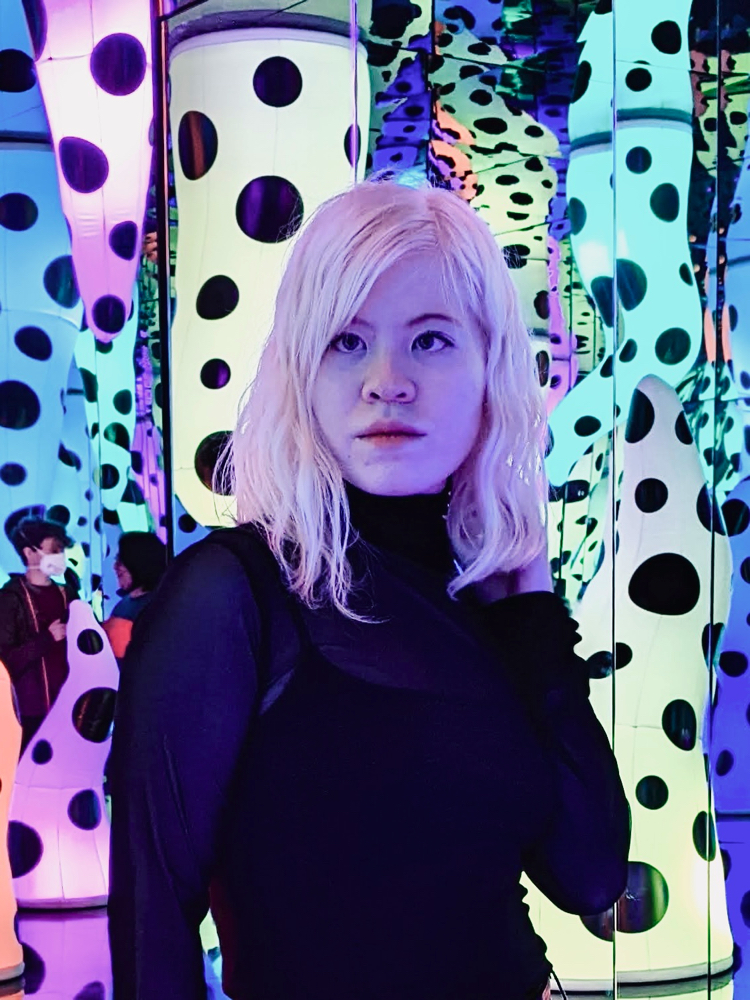
Hannah Wong
Photograph courtesy of Hannah Wong
The changing student population gives rise to new demands for educating those with diverse needs. One of these “firsts” is Hannah Wong, M.Arch. ’24, who says she believes she’s the first legally blind student to enroll at the Graduate School of Design. Wong says she has “to work longer, harder than everybody else to get the same tasks done”—particularly those requiring visual acuity, including model-making and computer work. She also contends with others’ doubts: “I’ve had professors demand to see my portfolio on the first day of class because they’re not convinced I can do the work.” But the toll that weighed most heavily on her was the extreme loneliness. “When you’re the first,” she says, “it means you’re the only, and that’s very—it’s very difficult.”
The “isolating experience” propelled her to search for a supportive community for students with disabilities, particularly within the design profession. When she couldn’t find one, she co-founded her own student organization in 2021. Design.able focuses on dismantling barriers that prevent access through education, and it welcomes members with disabilities (ranging from deafness to neurodivergence) and those without.
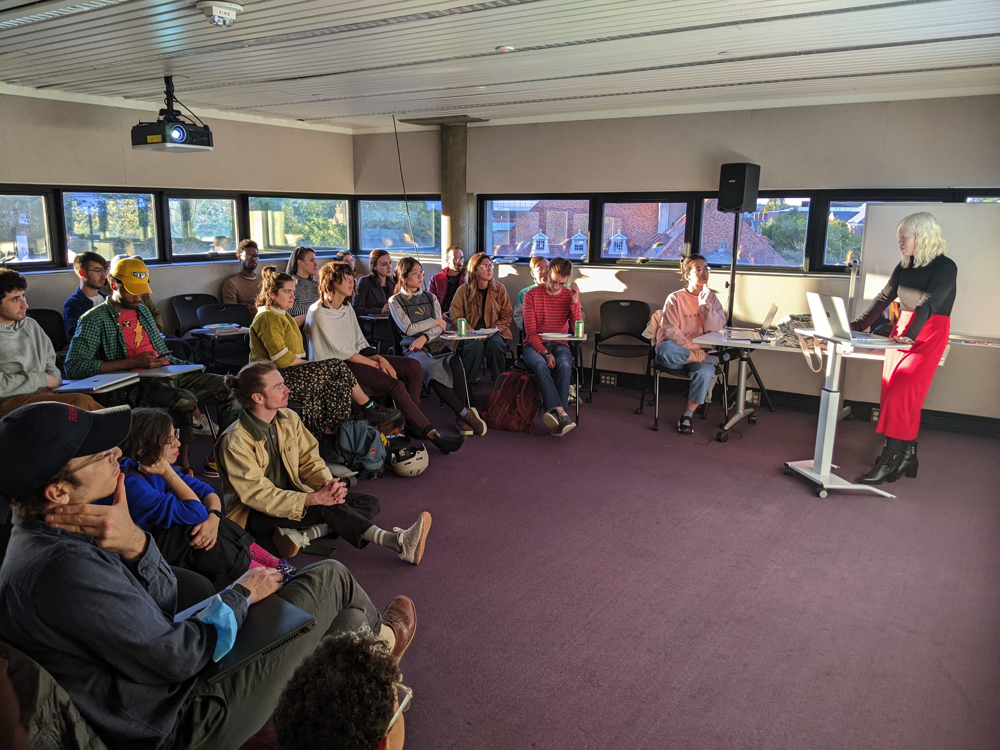
design.able club
Photograph courtesy of design.able
As its co-chair, Wong has steered design.able through dozens of speaker events, symposiums, and workshops. Her favorite was a September presentation on which sizes, shapes, and colors make graphics and drawings accessible (color combinations with high contrast like blue and yellow are more readable for those with visual impairments than, say, blue text on a purple background). “With disability justice, we often talk about these grand gestures or these grand ideals that we want to achieve,” Wong says; but it’s equally important to understand the effects of ableism—discrimination against people with disabilities—“and combat those even in the smallest ways possible.”
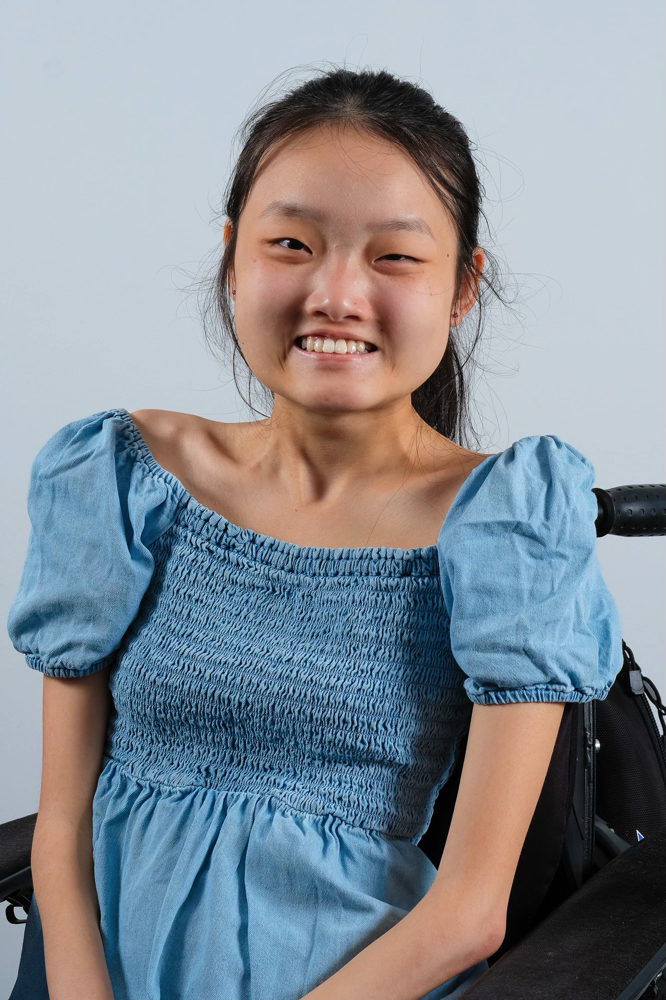
Melissa Shang
Photograph courtesy of Melissa Shang
Melissa Shang ’25, who has a form of muscular dystrophy called Charcot-Marie-Tooth disease, found her calling in disability activism at the age of 10. Feeling frustrated at the lack of representation in toys and popular culture, she and her sister Eva lobbied the American Girl company to release a doll with a disability, writing in a Change.org petition, “For once, I don’t want to be invisible or a side character that the main American Girl has to help: I want other girls to know what it’s like to be me.” Her story went viral, and the sisters obtained nearly 150,000 signatures. Shang says, “That was probably the moment where I realized that I had a voice and that my voice mattered.”
Since then, Shang has continued to champion her cause. In 2016, she co-authored a children’s book featuring a character with a disability. A year later, she wrote a New York Times op-ed about the need for more positive stories in popular culture about being disabled. And this summer, she’s interning in Washington, D.C., for the American Association of People with Disabilities and the Bazelon Center for Mental Health Law.
When Shang entered Harvard in 2021, she was “shocked to find out” that “no official disability rights group at the undergraduate level” existed (the former Disability Alliance dissolved just before the COVID-19 pandemic). After a “pretty isolating” semester, Shang says she co-founded the Harvard Undergraduate Disability Justice Club (HUDJ), which works with Harvard’s administration and its Disability Access Office—a department that identifies barriers to access and implements plans to address them—“to give students with disabilities a sense of community, as well as address some of the disability rights issues that they face.”
With a membership of more than 80 undergraduates, HUDJ calls for increased courses on disability topics, improved building accessibility, and more attendance options for those at risk of contracting COVID-19 who feel “like they have to choose between their health and safety and their education,” Shang says. But their ultimate mission centers around increasing campus visibility of those with disabilities. “Disabled people exist at Harvard—but you probably wouldn’t know it at first glance,” HUDJ’s leadership wrote in an op-ed in The Crimson last February. “As a result of the continued omission of our experiences, disabled students are surrounded by physical and systemic inaccessibility in every sphere of our lives at the College.”
Asked about some of the chief obstacles students with disabilities face, Upatham pointed to a general lack of understanding of the disability community. In addition to providing material support and accommodations for individual students (such as loaning wheelchairs and assistive listening devices), UDR and Harvard’s other disability-related departments seek to increase visibility and dispel stigma, which she says is “part of the fabric of the culture, unfortunately, but we’re seeing hope, change.” UDR’s initiatives include providing consultations for University affiliates looking to adopt best practices, training the University’s departments, and holding events celebrating disability pride. According to Upatham, society has “really made some good progress in reducing stigma—but “it would take 200 years before we became neutral, not positive toward disability, just neutral,” a task made harder at Harvard due to its “very large, complex, decentralized organization.”
“Part of our work involves helping people understand that disability is not only the largest marginalized group in the world—spanning all other identity groups—but it is essential to the conversation of anything related to this to diversity,” UDR associate director Kate Higgins says. “Disability is diversity, and if more people adopted that perspective, there would be a huge shift in the way that people with disabilities are supported in our environment.”
Disability activists like Wong and Shang underscore the importance of perseverance and long-term advocacy. “I spent the majority of my life trying to be as able-passing as possible,” Wong says. But now, she’s wholeheartedly embracing her disability and leading the charge to expand access for others. “I want to be successful not just for myself, but for all the students who I assume are going to come behind me.” For Shang, the historic and current “passion of disabled students and the resilience that we have” keeps her going.
What is driving the spirit of groups like these? Higgins—who has spent her own career advocating for those with disabilities—says, “I think it’s a culmination of societal energy around diversity initiatives. I think it’s a long-standing frustration for people with disabilities not having federal and state laws implemented in the ways they should be, and that fuel is really translating into activism.”
“No longer are people willing to be treated inequitably or not receive basic human rights like accessibility,” she continues. The determination to no longer accept poor treatment—“That’s part of the United States, that’s part of higher education, and it’s certainly part of Harvard.”
